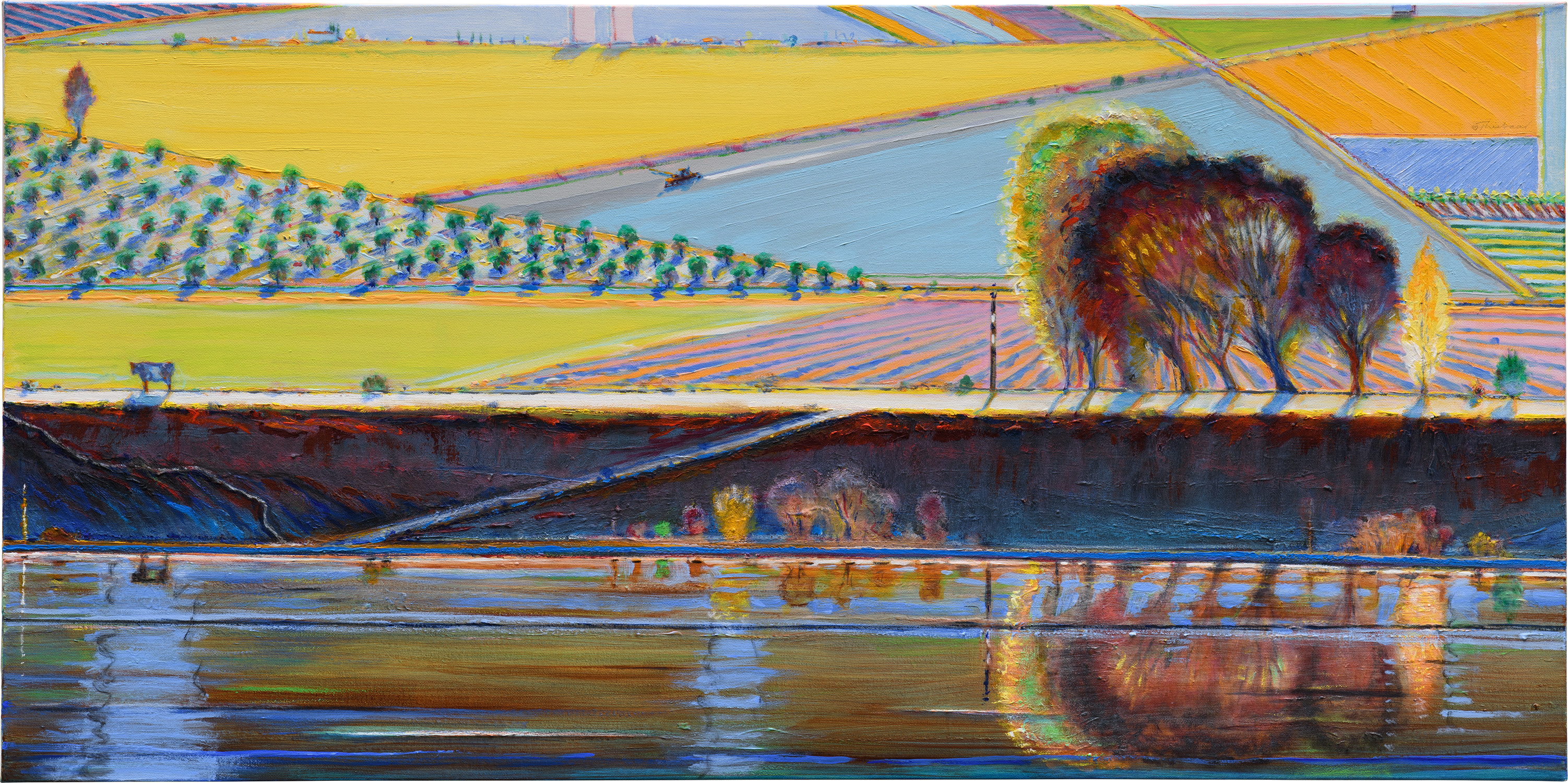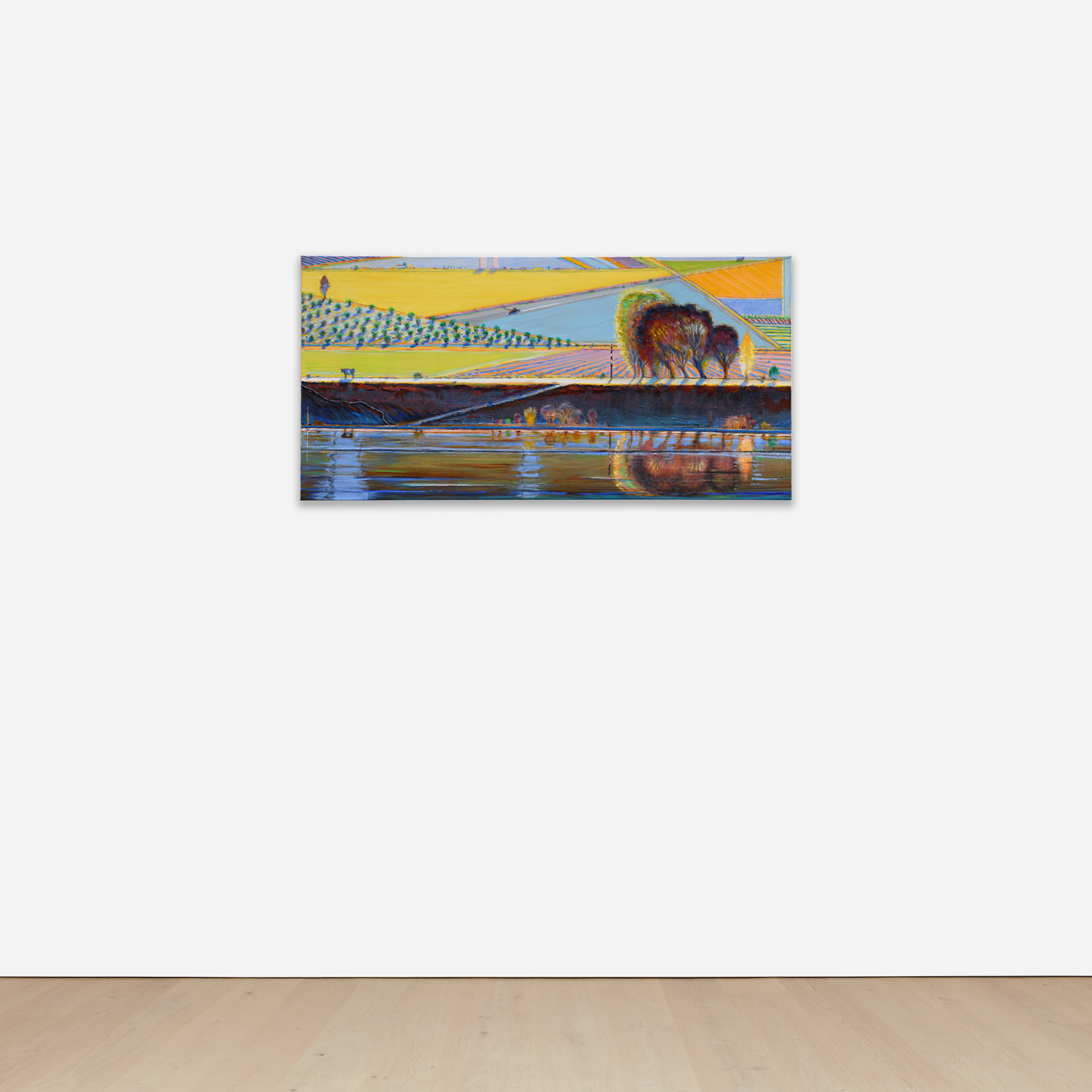





Property from an Esteemed American Collection
26
Wayne Thiebaud
Levee and Cow
signed “♥ Thiebaud” upper right; signed and dated “♥ Thiebaud 2001” on the reverse
oil on canvas
24 x 48 1/8 in. (61 x 122.2 cm)
Painted in 2001.